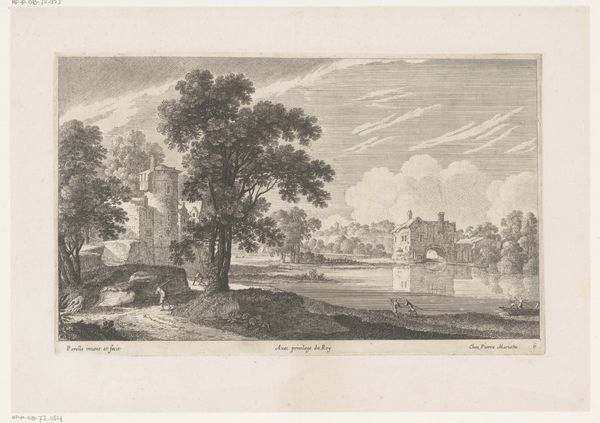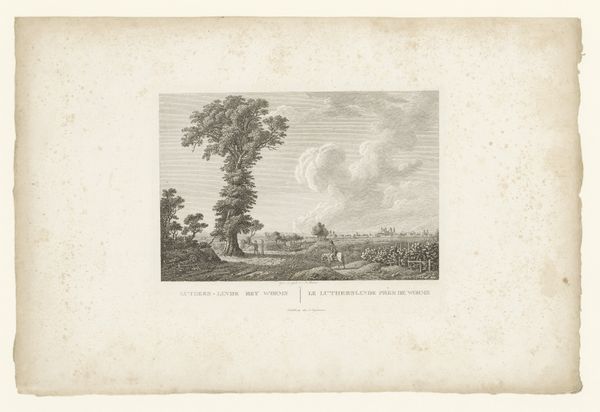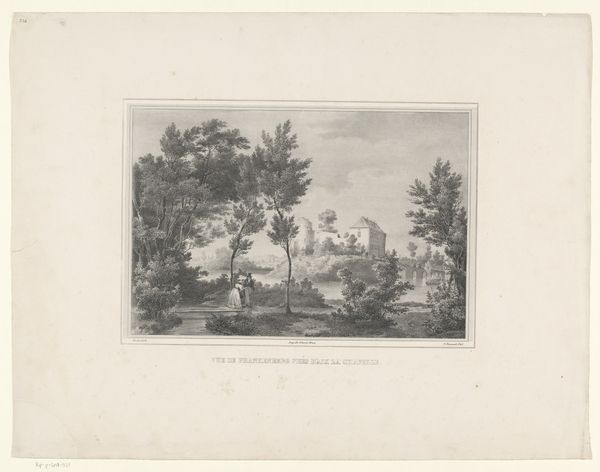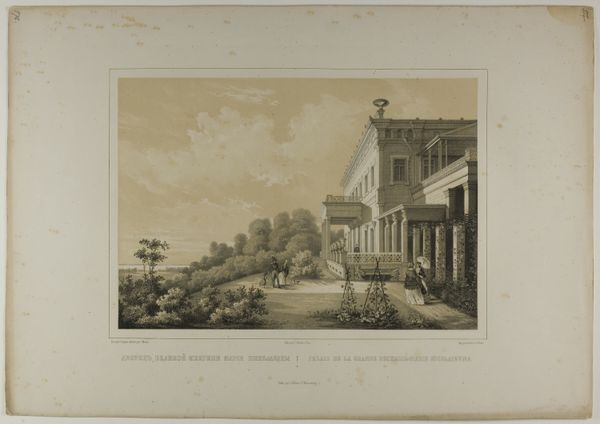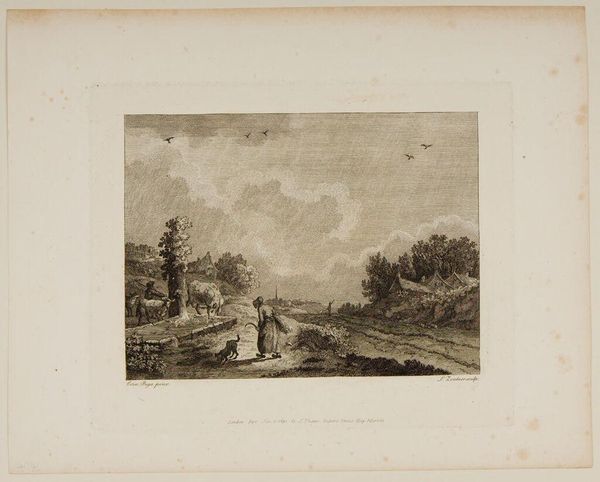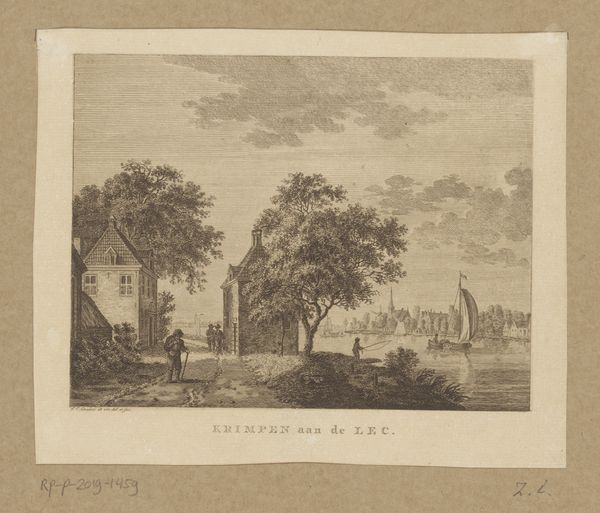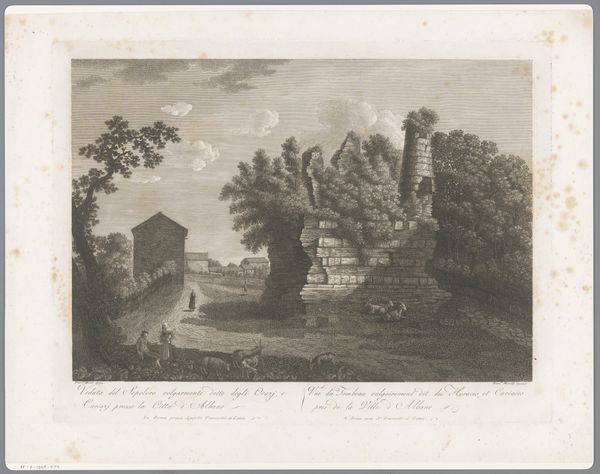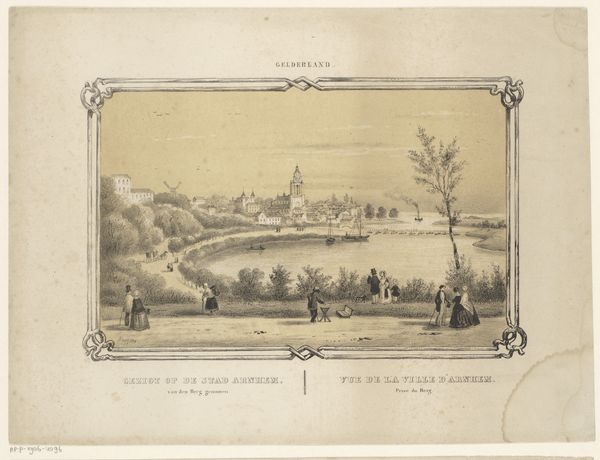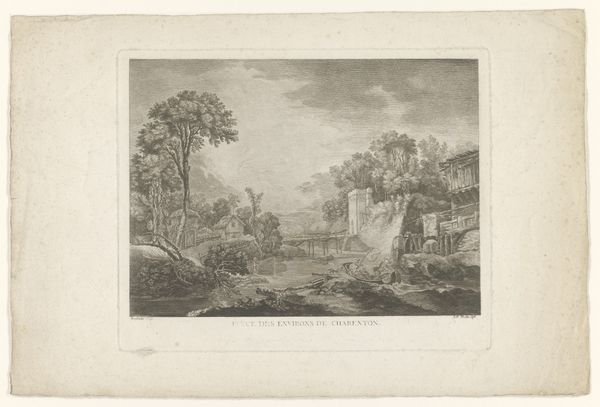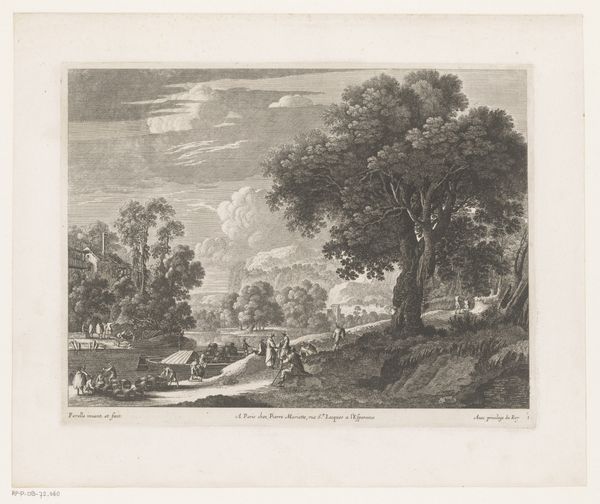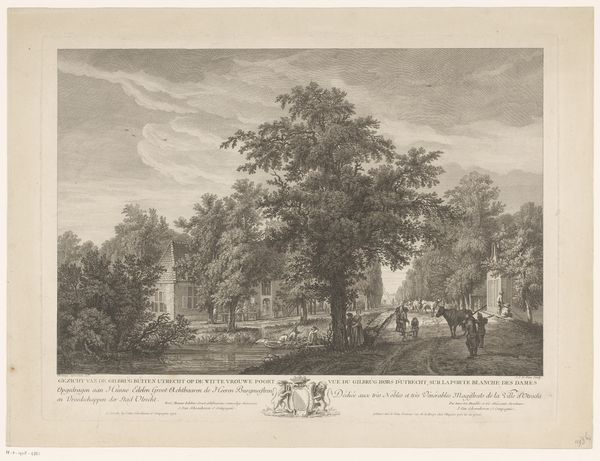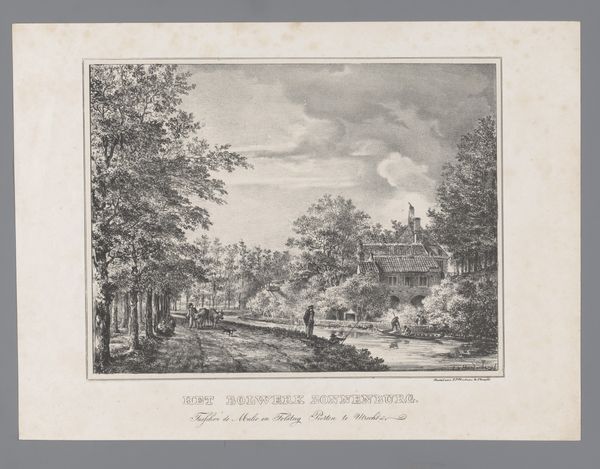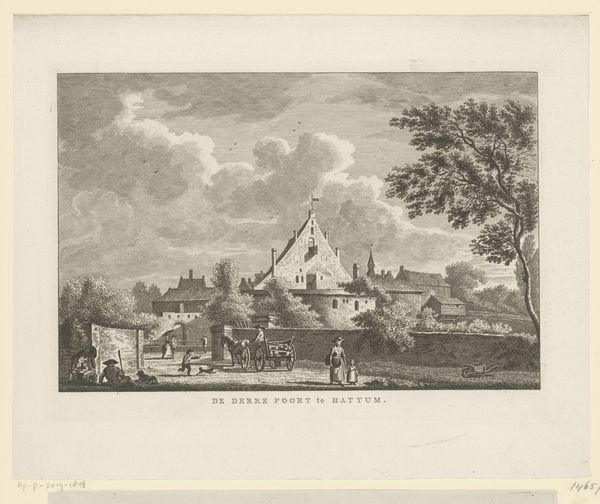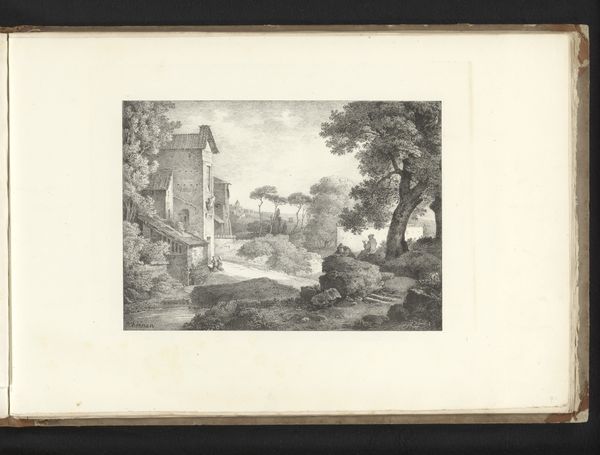
drawing, lithograph, print, paper
#
drawing
#
lithograph
# print
#
landscape
#
paper
#
romanticism
#
cityscape
#
watercolor
Dimensions: 243 × 345 mm (image); 401 × 570 mm (sheet)
Copyright: Public Domain
Editor: This lithograph by C. Schultz, dating back to around 1820, is titled "Tzarskoe-selo Palace, View of the Chinese Bridge". It’s a tranquil scene. All of the human subjects shown in the scene are enjoying the park and surrounding landscape, so I wonder what was involved in actually making this print? What strikes you about it? Curator: Looking at it from a materialist perspective, the lithograph process is key. Think about the labor involved – the quarrying of the limestone, the grinding and preparation of the stone's surface. And then Schultz meticulously rendered the scene in grease crayon, understanding how the material would interact with the printing process. Consider this alongside the subject: the Chinese bridge and the Palace were symbols of Imperial power, yes, but their depiction as a printed image makes them available for wider consumption, challenging the exclusivity of royal spaces. Editor: So, the mass production of the print itself democratizes the image of something exclusive and aristocratic. Curator: Precisely! And who was buying these prints? What was the economic system supporting their production and distribution? It points to a growing merchant class with disposable income and a desire to consume images of the exotic and the aristocratic. It raises questions of class and access that the picturesque view might otherwise obscure. Editor: That’s a really interesting way to frame it. I hadn't considered the distribution of power in the artwork beyond the image itself, instead reflecting on how it was produced and marketed to new consumers. Curator: Exactly. It's about interrogating the conditions of its creation and consumption, acknowledging the artistic skill but also placing it within a broader socio-economic framework. The stone, the ink, the paper, the labor, the market… These all contribute to the artwork's meaning. Editor: I'll definitely look at art through this lens moving forward, this whole new world is opening up. Curator: And I will be sure to appreciate a work of art in a vacuum as well! Thanks for the lively discussion.
Comments
No comments
Be the first to comment and join the conversation on the ultimate creative platform.
